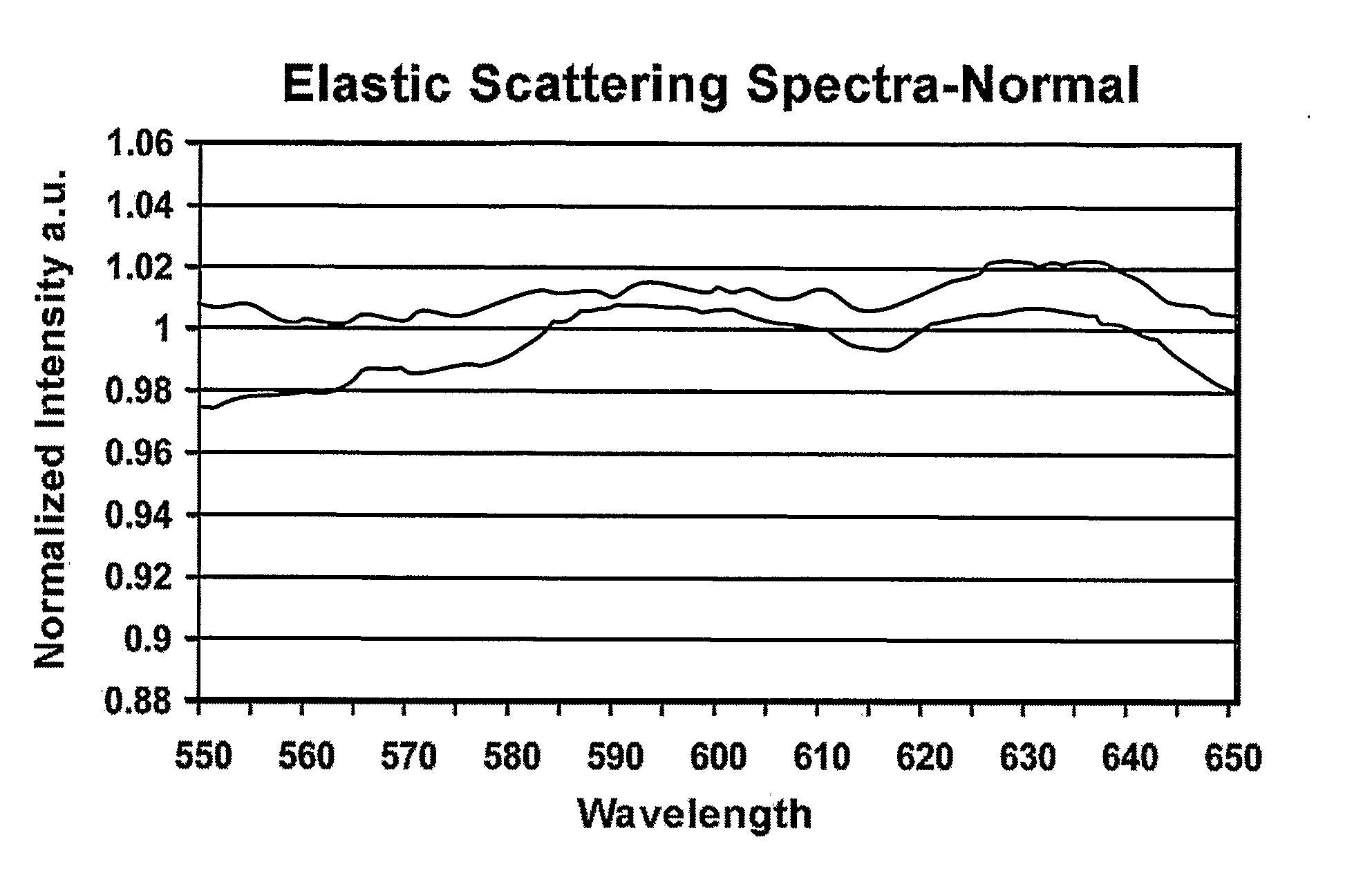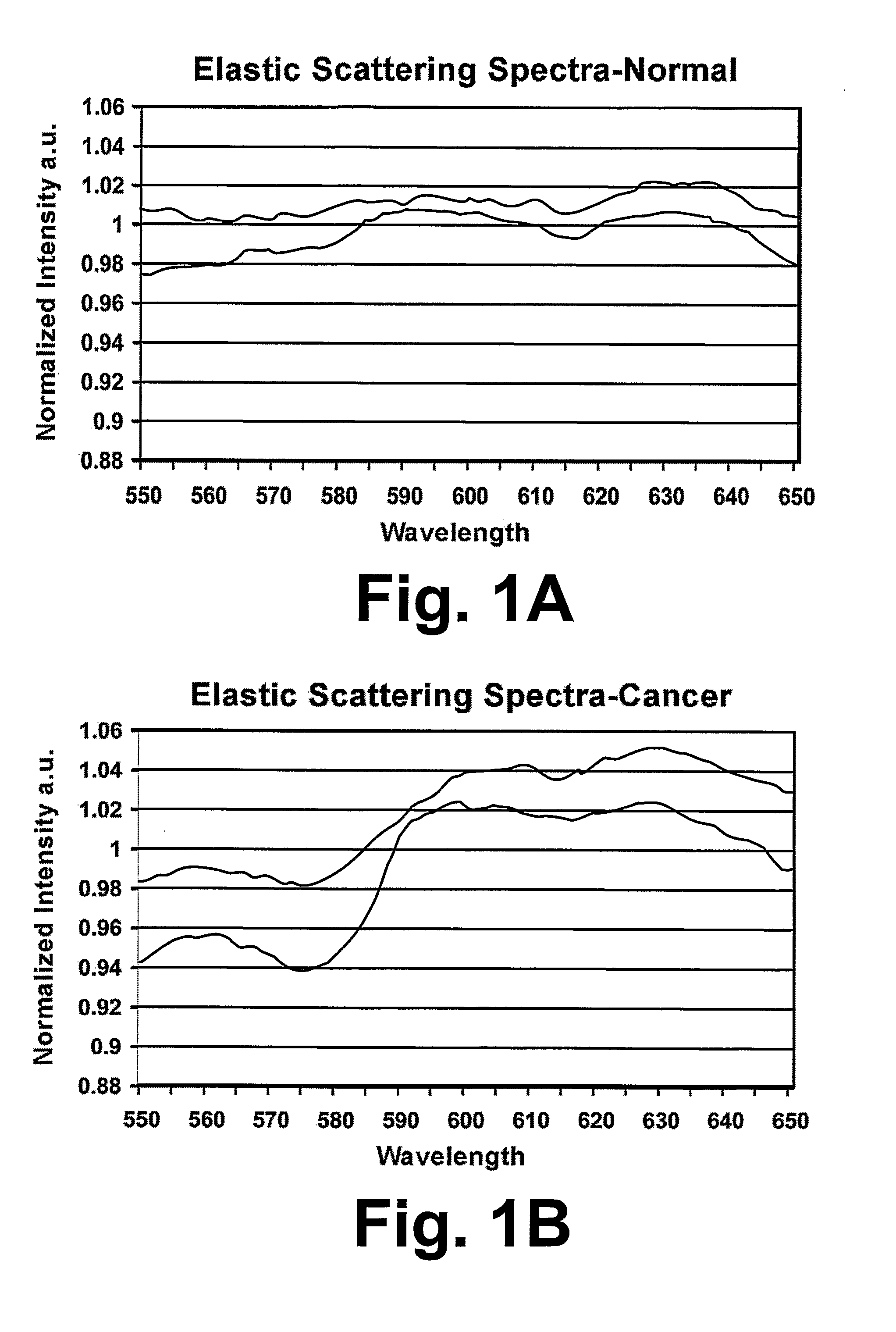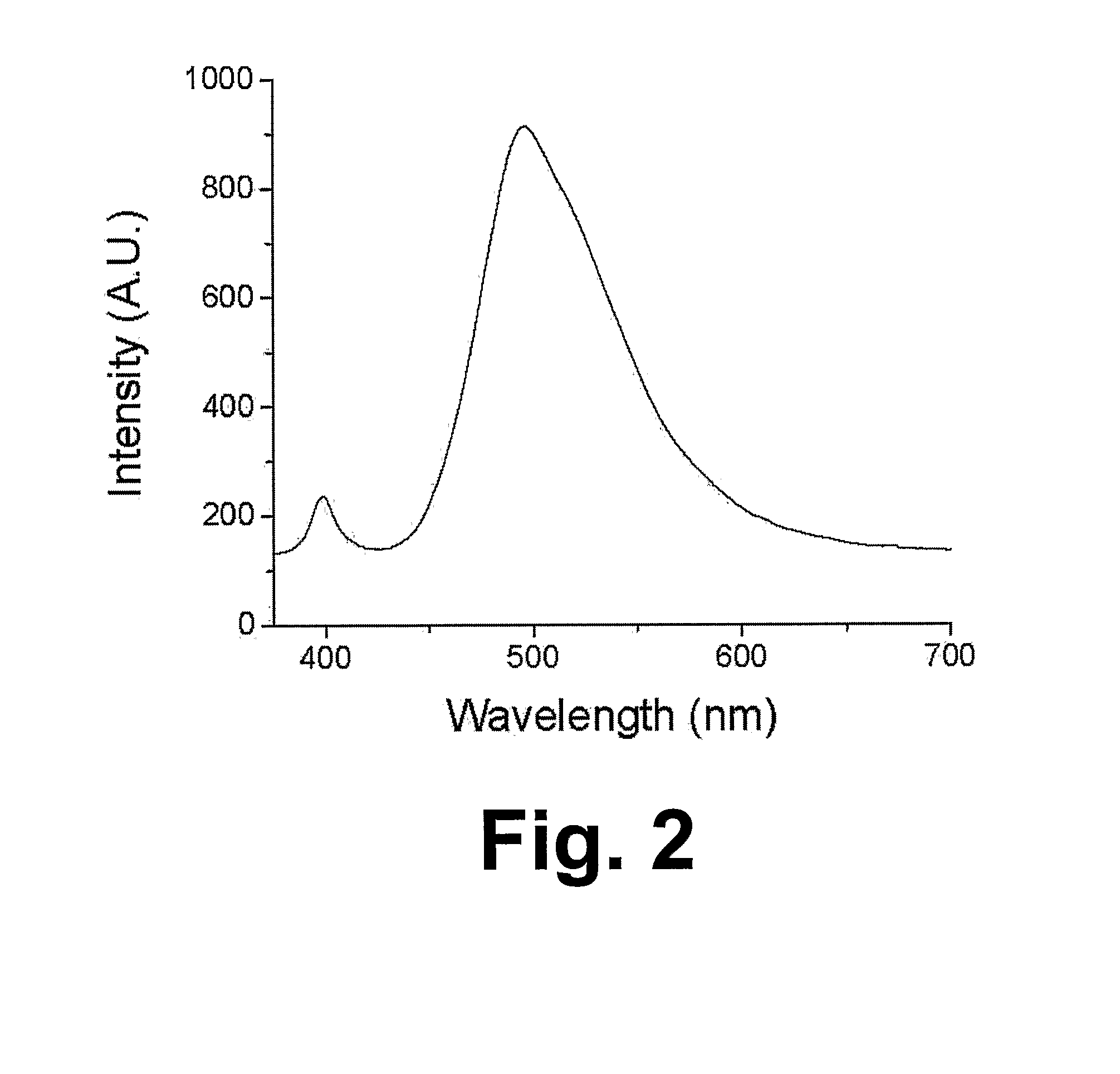Multi-Excitation Diagnostic System and Methods for Classification of Tissue
a multi-excitation, diagnostic system technology, applied in the field of tissue characterization, can solve the problems of inability to modulate at a sufficient rate, inability to recognize, and inability to yield the effect of sufficient ra
- Summary
- Abstract
- Description
- Claims
- Application Information
AI Technical Summary
Problems solved by technology
Method used
Image
Examples
example 1
a. Example 1
[0121]Results are provided in FIG. 16 for application of the above-described method to a sample of white wax. Wax has a consistency similar to that of biological tissue. The samples were prepared by coating slides with the wax, with the thickness estimated to be on the order of fractions of a millimeter. The results are presented as four plots, showing the diffuse reflectance, absorption, and multiple and single scattering functions as determined from the diffuse reflectance. In this instance, the fluorescence was negligible.
example 2
b. Example 2
[0122]Results are provided in FIG. 17 for application of the above-described method to a sample of red wax. Again, the samples were prepared by coating slides with the wax, with the thickness estimated to be on the order of fractions of a millimeter. The results again show the diffuse reflectance, absorption, and multiple and single scattering functions as determined from the diffuse reflectance.
example 3
c. Example 3
[0123]Results are presented in FIGS. 18A and 18B for a 10-μm-thick layer of prostate tissue preserved in formalin and mounted in paraffin. FIG. 18A shows the measured fluorescence and FIG. 18B shows results after application of the above-described methods, namely the diffuse reflectance, absorption, and multiple and single scattering functions as determined from the diffuse reflectance.
PUM
 Login to View More
Login to View More Abstract
Description
Claims
Application Information
 Login to View More
Login to View More - R&D
- Intellectual Property
- Life Sciences
- Materials
- Tech Scout
- Unparalleled Data Quality
- Higher Quality Content
- 60% Fewer Hallucinations
Browse by: Latest US Patents, China's latest patents, Technical Efficacy Thesaurus, Application Domain, Technology Topic, Popular Technical Reports.
© 2025 PatSnap. All rights reserved.Legal|Privacy policy|Modern Slavery Act Transparency Statement|Sitemap|About US| Contact US: help@patsnap.com



